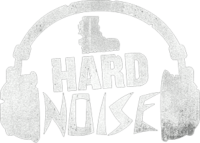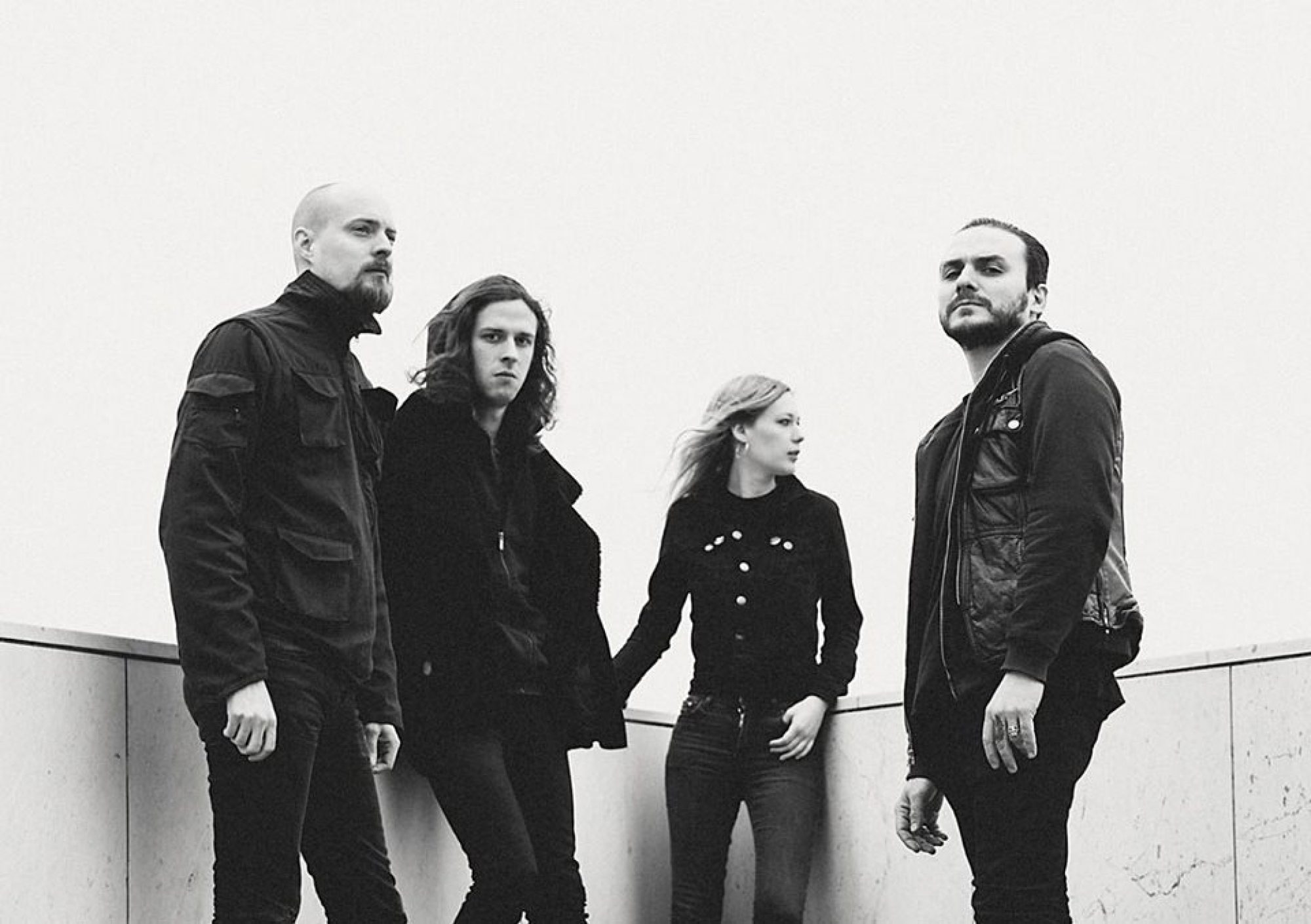Black clothes, a dour expression, and distaste for the moral majority — these have been the chosen accouterments of gothic rock fans and metalheads since the early ‘80s. And while fans of both genres share a generally nocturnal preference, the two styles don’t tend to overlap much sonically on first brush. A casual listener could be forgiven for taking a quick sample of the genres’ popular offerings — say, Metallica and the Cure — and not hearing any shared appeal between the two. However, in recent years, post-punk and gothic rock have seen an influx of creative and challenging bands composed in whole or in part by veterans of the extreme metal underground.
Take for example Finland’s Grave Pleasures. The band’s vocalist and guitarist are black metal veterans. Given that, one might expect their music to uphold the hyper-fast, shrieking hysterics that black metal is known for.
Nope. Grave Pleasures is a polished and irradiated update on the sounds of Joy Division, or Tuxedomoon if you’re too cool to reference a band with a tee shirt so popular WaPo reported on it. Grave Pleasures is far from alone — naming multiple post-punk outfits staffed by heshers from the last five years is easy. Hell, the singer of one such band — Publicist U.K.— includes the musician that wrote that same WaPo article. There’s metal musicians from rEvocation and Municipal Waste in that band, as well.
Before continuing, a note: for the purposes of this article, I’m going to use the terms post-punk and gothic rock relatively interchangeably. Strictly speaking, post-punk is a much larger genre that arose in the late ‘70s, taking the dauntless spirit of first wave punk while jettisoning the garage rock nostalgia. Post-punk mutated into innumerable styles, including synthpop, new wave, some industrial, and much of modern indie — it’s hard to find a modern “rock” band of any stripe that doesn’t have at least some post-punk in it. However, many of the earliest post-punk outfits, including the Cure, Bauhaus, Siouxsie and the Banshees, Killing Joke and others experimented with or totally zeroed in on gothic rock, which took the core sound of post-punk, dialed up the glam and added the pitch-black fashion choices that have become the genre’s signature. That’s the realm of post-punk many of these new bands draw from.
Likewise, it isn’t as if metal and goth haven’t stuck their tongues down one another’s throats before — this was Type O Negative’s whole shtick, and the aforementioned Metallica covered Killing Joke as well— but the proliferation of metal musicians embracing the genre’s tropes completely inside projects (or new main projects!) is somewhat new.
New York’s Vaura, for example, formed in 2009. At the time the band’s vocalist, Josh Strawn, was active in another well-received band in the same style, Blacklist. For Vaura, however, Strawn recruited guitarist Kevin Hufnagel, the virtuosic guitar player of metal acts including Dysrhythmia as well as technical death metal wunderkinds Gorguts. Bassist Toby Driver is better known for his work in the genre-bending outfit Kayo Dot, but also helmed his own progressive metal outfit, maudlin of the Well[sic], in the late ‘90s and early aughts.
For Strawn, Vaura was a direct result of the desire to incorporate more metal into the music that he was writing, against the wishes of his Blacklist bandmates.
“Continuing with Vaura was really a matter of the fact that my bandmates in Blacklist were not creatively interested in the specific kinds of metal directions my writing was taking,” Strawn related in our interview.
Other groups have found the post-punk and metal intersection in the opposite direction, with members beginning in the metal realm and moving toward the sounds of the ‘80s later. Holland’s DOOL, for example, features the former rhythm section of satanic rock band The Devil’s Blood, who toured the US just once alongside black metal acts Behemoth and Watain. DOOL recently released an EP featuring a cover of the aforementioned Killing Joke’s hit single “Love Like Blood.” It’s the most explicit the band has been in their deference to gothic rock, but their largely recognizable version represents a minimal departure from their established sound.
According to DOOL’s singer and guitarist Rynne Van Doorst, the move to covering Killing Joke came naturally as a result of the band members’ age.
“Since most of us were born in the ‘80s, this song has been playing on the radio at the very beginnings of our musical development. It was a big hit in Holland, played on every radio station. This kind of song gets weaved into your genes one way or another,” she said, going on to clarify that the band needed a cover in order to lengthen their set list on their first headlining tour, and decided to cover the song in-studio at the end of those tour dates.
It’s worth noting, however, that DOOL’s Dutch contemporary GOLD, which also features a former member of The Devil’s Blood, likewise shares some of their gothic tendencies. The band recorded their latest album Why Aren’t You Laughing? with producer Jaime Gomez Arellano, famous for working with metal acts including Paradise Lost and Ghost, suggesting a triangulation between metal, gothic rock, and bands like The Devil’s Blood. GOLD declined to accept any genre when asked to comment by Hard Noise, but their Bandcamp page employs both the “goth” and “post-punk” tags.
At this point, the phenomenon of metal fans in post-punk bands writing music that combines the power of both is more than a collection of isolated instances — it’s a phenomenon that labels can count on to appeal to fans of both genres. Case in point, Vancouver’s ACTORS and Copenhagen’s The Foreign Resort, both post-punk bands staffed in part by former metal musicians, have released records on Artoffact records, a label which has also reissued records by Detroit grind trio Cloud Rat and LA Industrial Metal act 3Teeth — and which has also acquired coverage in metal-centric Decibel magazine for The Foreign Resort.
According to The Foreign Resort’s founder and frontman Mikkel Borbjerg Jakobsen, Artoffact’s metal connection was not a goal when they decided to work with the label … but it was a plus.
“We chose to work with Artoffact Records because of the good chemistry between us and the label,” he said. “Getting ready to release our album we learned about Artoffact’s PR strategy, which is a little different than we’re used to — working with metal press as well as more traditional ‘dark music’ press. But when we read what Decibel magazine wrote about the album, it was clear that they understand what we have going on and that there’s an audience in the metal that is likely to like our music.”
Some of the desire on the part of metalheads to embrace gothic rock and post-punk seems to stem from metal musicians yearning to write catchier music free of metal’s perceived boundaries. In an interview with Decibel, gothic rock band US Grave, which features two members of Arizona metal act Take Over and Destroy, guitarist Alex Bank Rollins hints as much.
“With US Grave we wanted to explore something different with dark, dreamy pop songs that you can sing along to,” Rollins said. “That still gives us a broad template to work within, so there are a lot of possibilities.”
So the connection between metal and post-punk exists, and has been especially active recently — but why? According to Asa Eisenhardt, vocalist and guitarist of Seattle post-punk outfit Nostalgist, it’s an aesthetic similarity.
“Shooting from the hip I’d say the fan overlap with metal folks is just dark recognizing dark,” he said to me in another interview with Decibel. Eisenhardt is an outspoken death metal fan, and employed Aesop Dekker, former drummer of black metal outfit Agalloch among others, on his last record — Monte MccLeery of Seattle funeral doom metal band Un also filled in for the project on Bass.
Josh Strawn, however, sees a musicological connection, as well.
“I do think it’s note choices to some degree — chord progressions like the old Am F G or, even better, the Dm Am Em.” Like Eisenhardt, though, he sees the metal connection to post-punk as something ephemeral and subjective. “We are influenced not just by similar music but culture. […] Something about people who create dark pop and metal is drawn to work like that and then those moods get refracted through what they make. I would also say that compared to some more confessional genres like folk and other corners of indie and pop, dark pop and metal are imaginative. And much music is imaginative but these genres tend to be the places where people design entire other worlds. Often you hear the term ‘otherworldly’ and immediately imagine a darkness. So I think connections like that are the real glue.”
Regardless of the reason, the connective tissue between metal and post-punk or gothic rock, all genres which proliferated in the ‘80s, has found renewed strength in recent years. It’s unclear what future awaits these entwined styles, but whatever it is, it will be dark.


